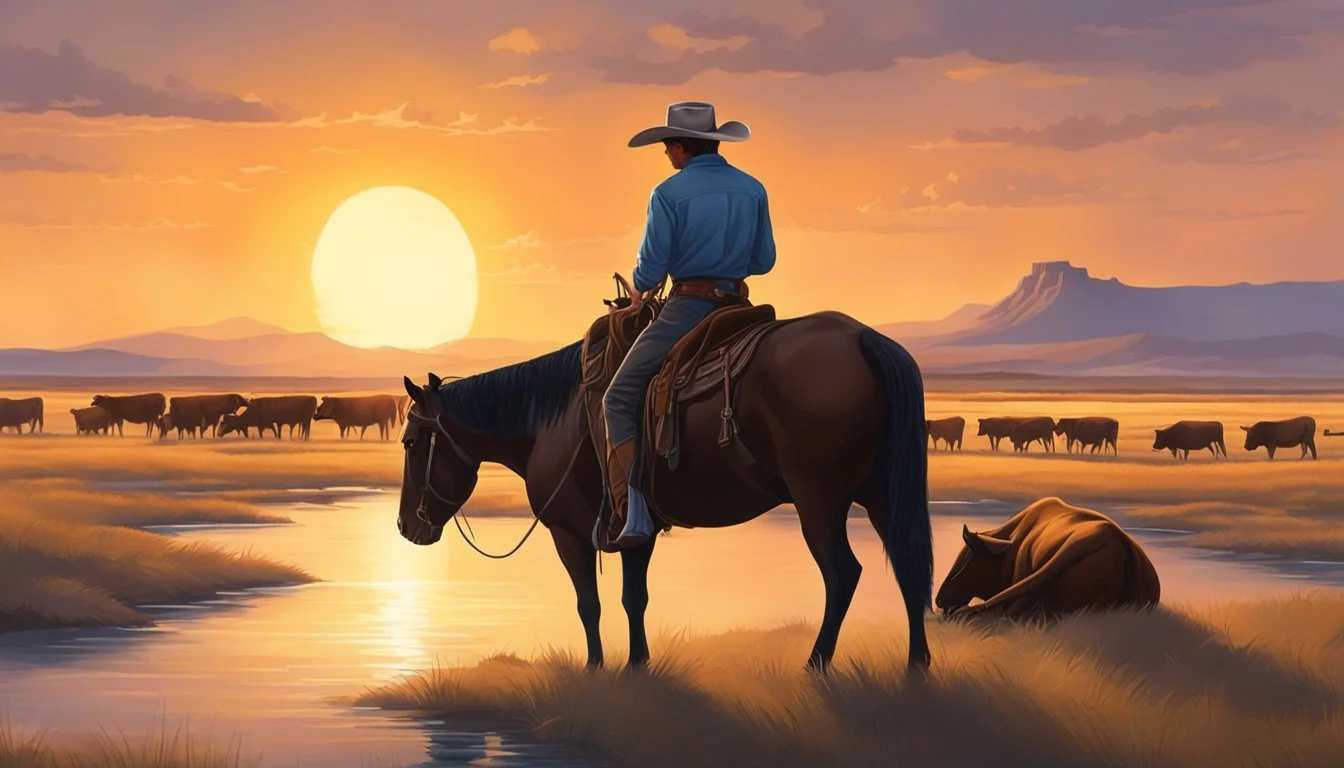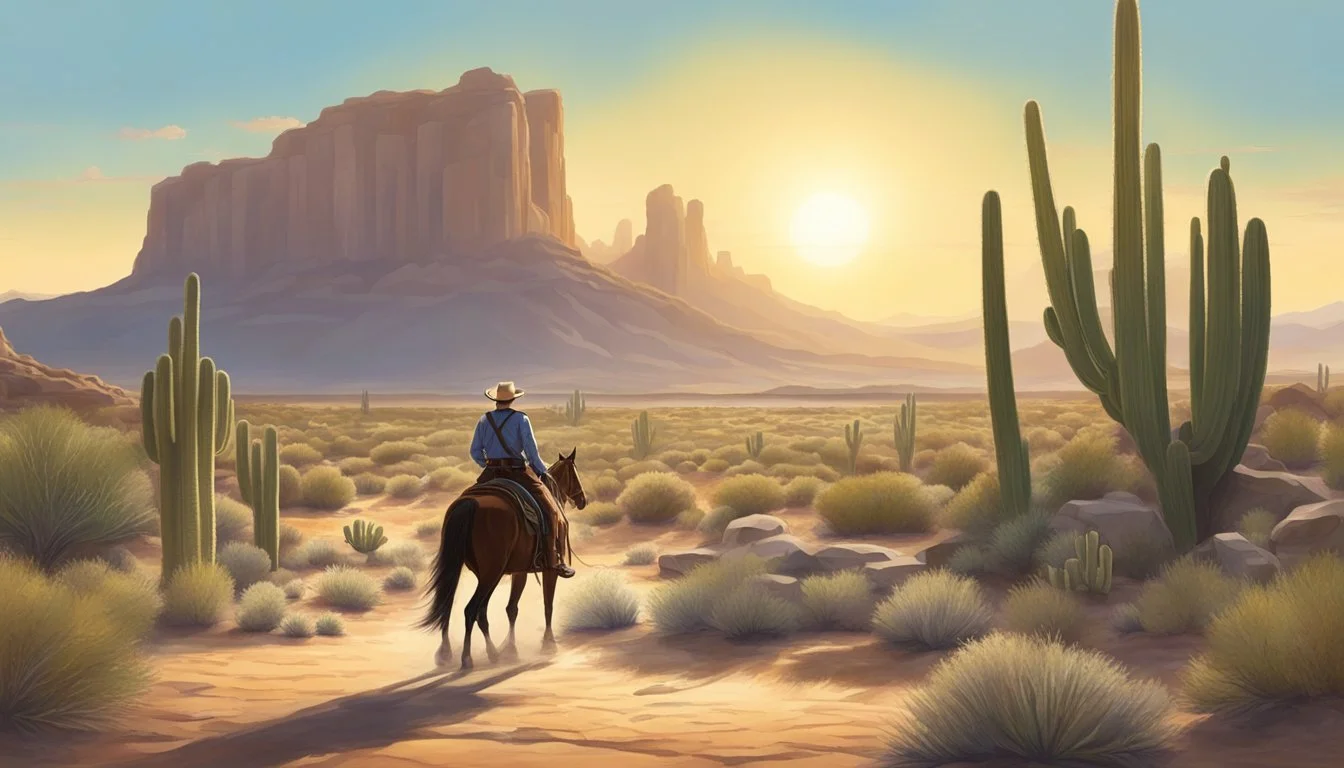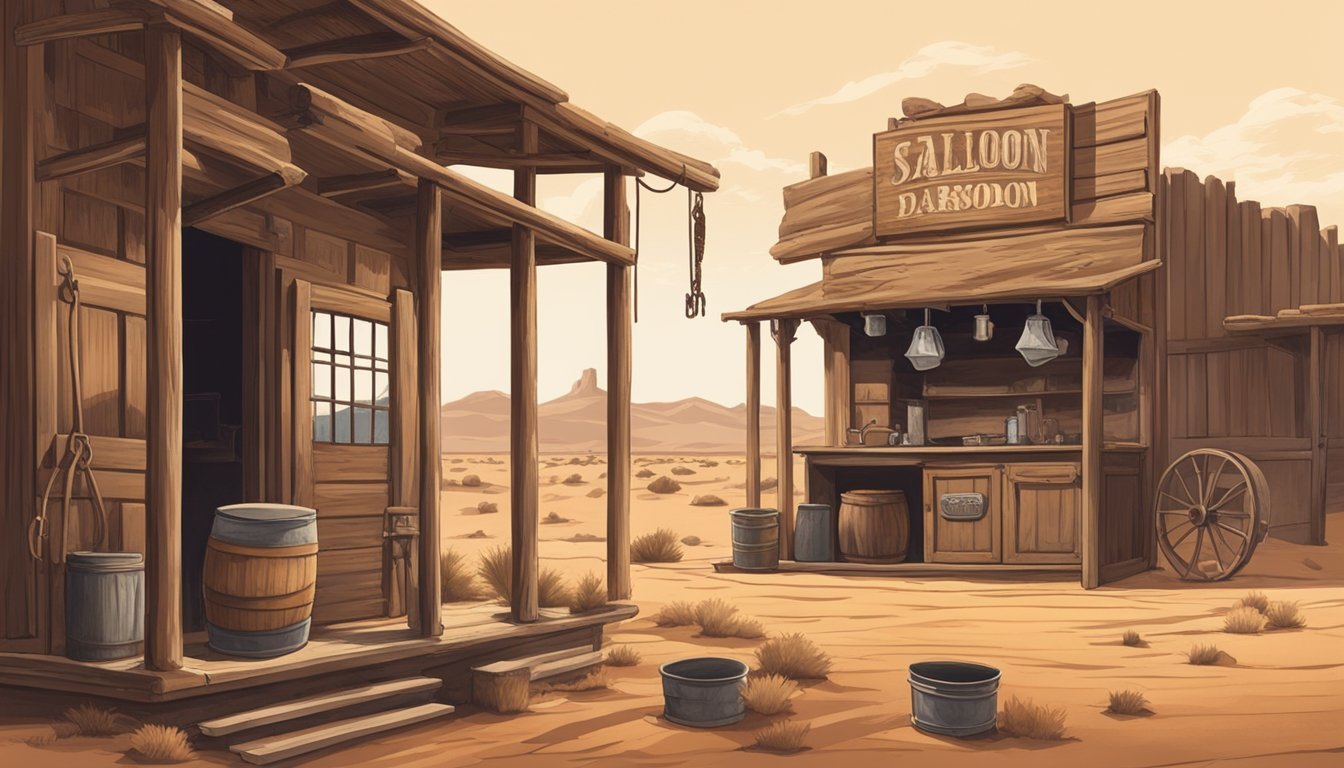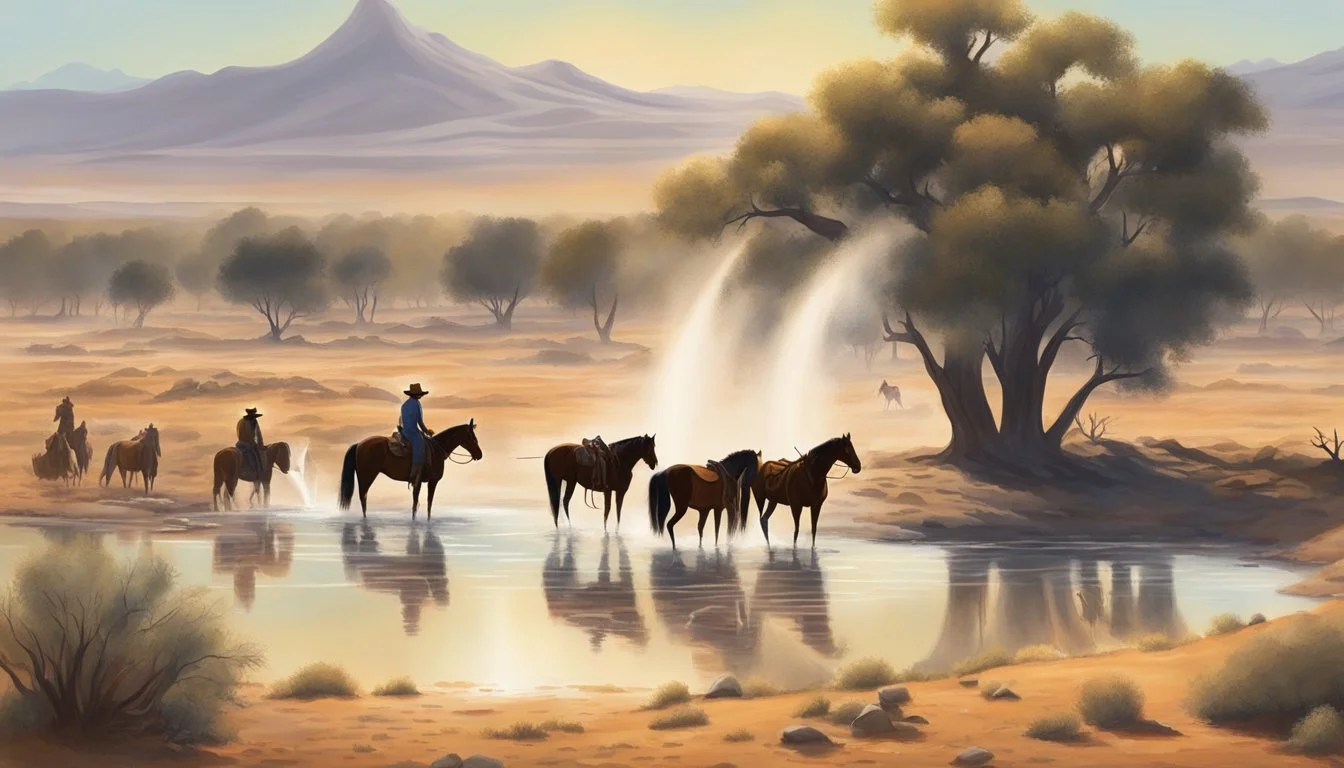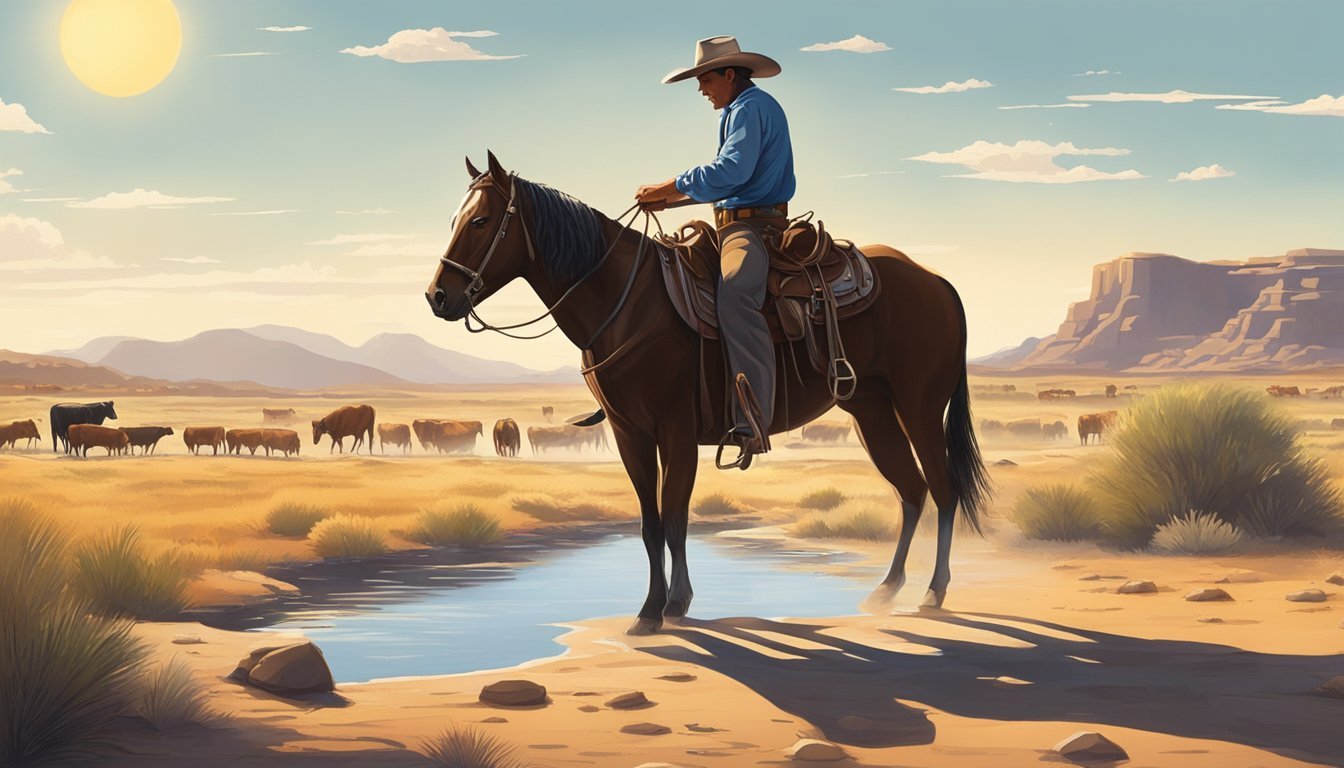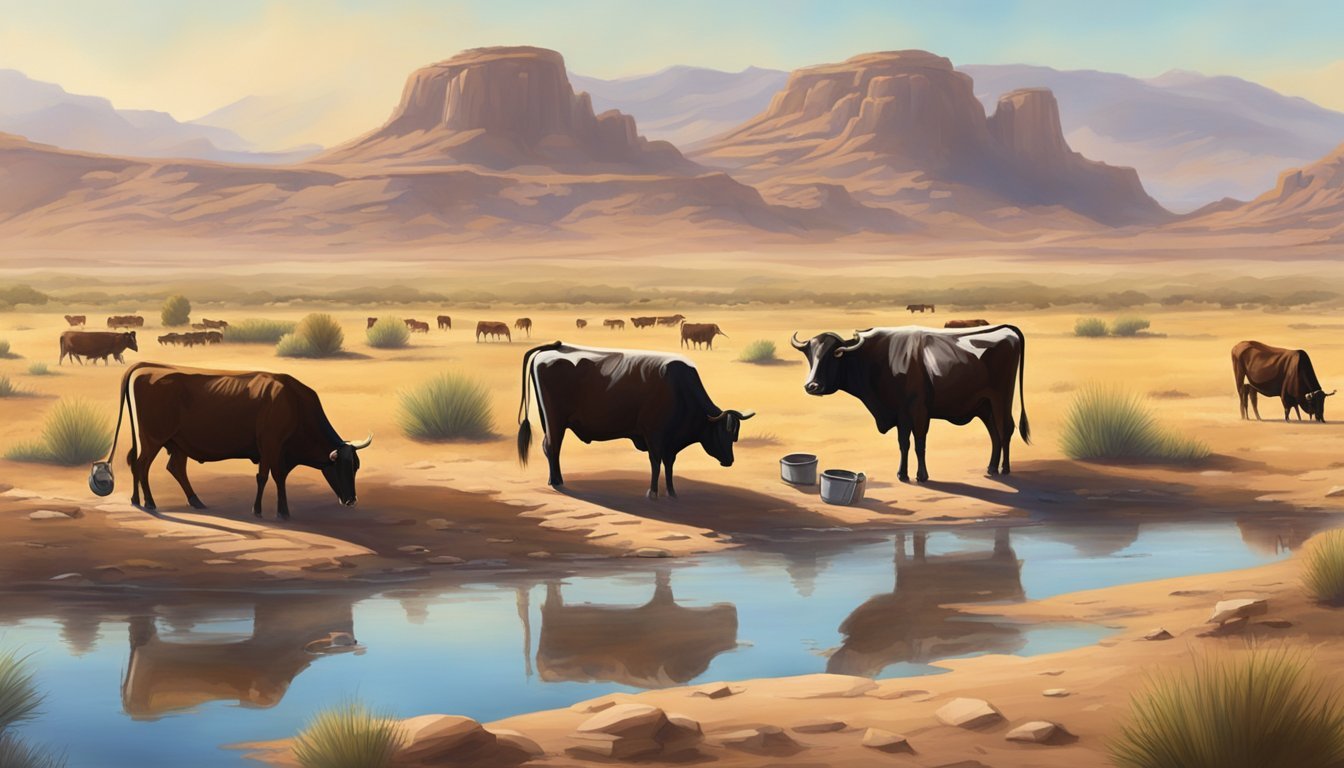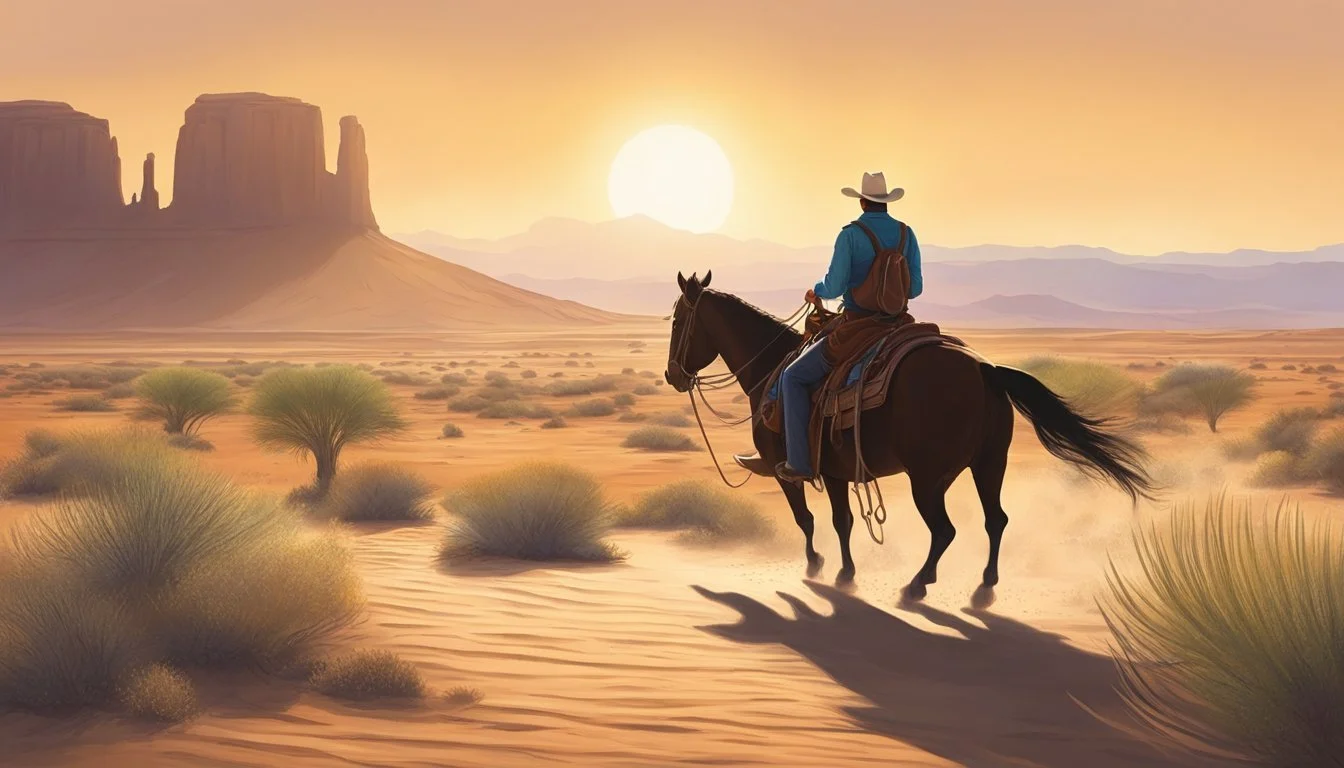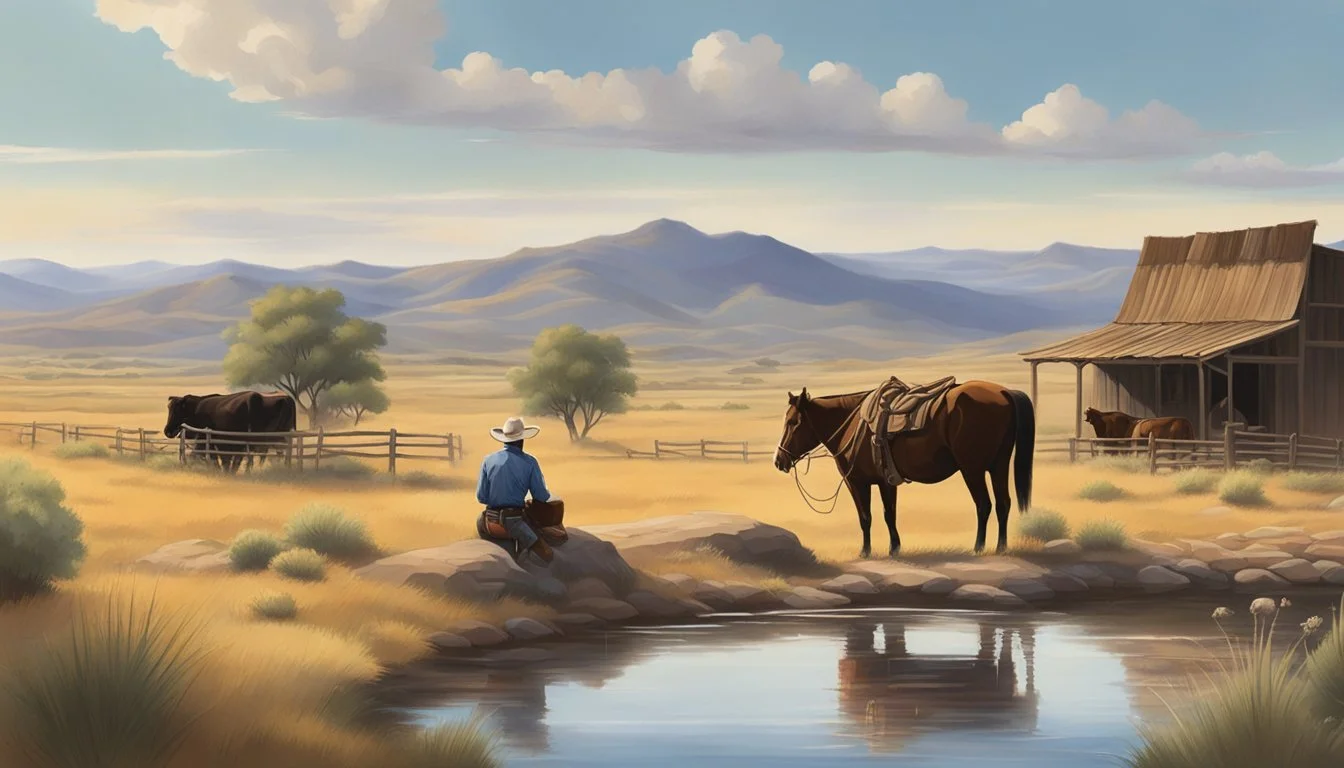The Importance of Watering Holes in Cowboy Lore and Reality
Crucial Gathering Spots
Watering holes have long been a staple in the lore of the American West, serving as crucial gathering points for both the cowboys and the livestock they tended during their long cattle drives across the expansive territories. These spots were more than just sources of hydration; they were social hubs where cowboys shared news, traded stories, and formed connections that knitted the fabric of cowboy culture. In an era defined by vast distances and slow communications, these watering holes were vital, functioning as both literal and metaphorical oases amidst the often harsh and unforgiving landscape of the American frontier.
In reality, the importance of watering holes extended beyond their romanticized depiction in Western cowboy narratives. These bodies of water were critical resources for survival, as the arduous work of managing cattle herds demanded that both cowboys and their charges had access to regular water sources. The logistics of planning a cattle drive factored in the locations of dependable watering holes, illustrating how these natural features shaped the literal pathways of the American cowboy.
While cowboy culture has been mythologized in countless films and literature, the watering holes represent a tangible link between the fantasy and the actual experiences of cowboys in the American West. They provided a space for rest and respite, an opportunity to replenish and prepare for the journey ahead, and, importantly, a setting for the community and camaraderie that are now synonymous with the image of the Western cowboy.
Historical Emergence of Cowboys
The cowboy archetype stems from a rich heritage involving diverse cultural groups, including Mexican vaqueros, Native Americans, African Americans, and Spanish colonizers. The emergence of the cowboy is closely linked to the cattle raising traditions that were brought to the Americas by the Spanish in the 16th century.
In Texas, then part of Mexico, cattle ranching expanded in the 1700s, with the vaquero tradition shaping the cowboy's work. These original horsemen were skilled in riding and livestock management.
Origin Influence on Cowboy Culture Vaquero Roping, riding, and ranching techniques Mexican Language impact, such as 'rodeo' and 'lasso' Spanish Introduction of cattle to North America African American Contribution in herding and ranching skills
Native American tribes also played a part in shaping the cowboy culture through their knowledge of the land and animal tracking. Over time, African Americans, many of whom were freed slaves, found employment as cowboys and added to the diversity and expertise of the workforce.
Despite the hard realities of the work, involving long hours and low wages, the emergence of cowboys led to a significant economic activity through cattle drives designed to transport livestock from Texas to railheads in Kansas. Representing a blend of skills and cultural influences, the historical cowboy symbolizes a unique American identity forged from a confluence of global traditions.
Cowboy Gear and Apparel
The proper attire and equipment are fundamental in cowboy culture, not only for their functionality but also as enduring symbols of the American West. Cowboy gear has evolved over time but remains centered on practicality and the harsh demands of life on the range.
Significance of the Cowboy Hat
The cowboy hat is an iconic emblem of the American West. More than just a fashion statement, the cowboy hat serves practical purposes: protection from the sun, rain, and other elements. Initially fashioned from felt or straw, it has a wide brim and high crown designed to provide shade and ventilation. The Stetson, a popular type of cowboy hat, became synonymous with durability and Western authenticity.
Evolution of Western Clothing
Western clothing has its roots in the rugged lifestyle of 19th-century cowboys. Leather played a pivotal role in this evolution, leading to the development of durable chaps that protected riders from the elements and brush. Denim jeans, reinforced with rivets at stress points, were adapted for work wear. As ranching industrialized, the clothing transitioned into a more formalized Western wear, distinct for its decorative elements yet grounded in practical design.
Role of the Saddle in Cowboy Life
The saddle is a cowboy's most prized possession, essential for daily tasks and long cattle drives. A well-crafted saddle provides the foundation for a cowboy's workday; it is designed for long hours of riding, offering support and comfort to both horse and rider. Saddles often feature tooling on the leather and can be personalized with various accessories. Additional gear like boots provided stability on the stirrups, while the wide-brimmed sombrero was adapted by some cowboys for even more extensive sun protection.
The Watering Hole in Everyday Cowboy Life
In the days of the Old West, watering holes were more than just places for cowboys to quench their thirst; they served as vital centers for community gathering and commerce.
Social Hub for Cowboys and Ranchers
Watering holes were the quintessential gathering spots for cowboys after a long day on horseback. These establishments provided a sense of community and camaraderie among those who spent the majority of their time in isolation on the range. Cowboys converged on saloons to share stories, catch up on news, and enjoy a brief respite from the arduous demands of cattle drives. Ranchers, often handling the business side, frequented these locales to discuss trade, property, and livestock concerns with their peers.
A Site of Economic Exchange
Beyond their social function, watering holes served as informal trading posts. Here, transactions were carried out over the bar, often solidified with a handshake and the exchange of hard-earned coins. Barter systems were commonplace, with cowboys often trading goods like grass, horse feed, and equipment. Cattle drives were central to the economy, with watering holes acting as waypoints where cowboys could negotiate jobs, discuss cattle prices, and decide on future routes for driving cattle to railheads or markets.
Cowboy Work and Skills
In the daily life of a cowboy, expertise in cattle handling, adept roping, and skilled horseback riding were not just beneficial but essential for the successful operation on the range.
Cattle Herding and Management
Cowboys excelled in the management of cattle, a crucial part of their work. Herding skillfully directed the movement of cattle across vast rangelands. During a roundup, cowboys would gather cattle for branding, sorting, or driving them to market. Coordination was key, as cowboys communicated with each other to steer herds effectively, often requiring knowledge of cattle behavior to prevent stampedes or losses.
Roping Techniques and Uses
Roping was an indispensable skill for cowboys, employed in various tasks such as capturing and restraining cattle for branding or medical treatment. They used a lasso, a loop of rope, with precision to ensure the safety and control of the animals. Different roping techniques were applied depending on the situation, with cowboys mastering quick tosses and accurate throws to handle cattle efficiently.
Horseback Riding Proficiency
On horseback, cowboys showcased remarkable riding skills, critical for many aspects of their work. Proficiency in riding allowed cowboys to keep pace with running cattle, maneuver through difficult terrain, and work long hours often under harsh weather conditions. Mastery over their horses was pivotal for the intricate tasks that defined cowboy life, such as leading a roundup or navigating during a cattle drive.
In these key facets of cowboy work—cattle herding, roping mastery, and horseback riding—cowboys demonstrated a strong work ethic and specific skill sets that were vital to the ranching industry and integral to the fabric of cowboy lore and reality.
Cultural Representations of Watering Holes
The cultural significance of watering holes in cowboy lore is profoundly depicted across various storytelling mediums, from literature to film and music. They are not only a symbol of sustenance but also a gathering place for social interaction, both peaceful and conflict-ridden.
Depiction in Western Novels
Western novels often use watering holes as critical settings for plot development. They serve as locations where cowboys rest, horses are watered, and characters share stories or confrontations ensue. For instance, in Louis L'Amour's works, watering holes are frequent backdrops for pivotal meetings between his characters, illustrating both the harshness of the landscape and the respite such places offer.
Portrayal in Hollywood Movies
In Hollywood movies, especially within the Western movie genre, watering holes become stages for iconic scenes. They provide natural settings for shootouts, standoffs, and rendezvous points for outlaws and lawmen alike. The 1953 classic "Shane" showcases a tense confrontation at a saloon's watering trough, underlining the cultural relevance these sites hold in cinematic storytelling.
The Watering Hole in Cowboy Songs and Ballads
Within popular culture, particularly in cowboy songs and ballads, watering holes are often referenced metaphorically to represent an oasis amid trials. They appear in lyrics as places of solace and reflection. Songs like "Cool Water" by The Sons of the Pioneers epitomize the deep yearning for a life-sustaining source amidst the struggles of the frontier life.
Watering Holes and the Shaping of the American West
Watering holes were pivotal in the development of the American West, influencing patterns of settlement and fostering various economic and social interactions.
Influence on Settlement and Expansion
Watering holes served as critical waypoints for settlers moving westward. They provided essential sources of water for both people and livestock, dictating the paths of expansion through otherwise arid landscapes. Often, these essential spots became the nuclei of burgeoning cattle towns, as they were natural places for cattle drives to rest and resupply.
Encounters and Interactions with Native Americans
Proximity to water was a catalyst for both cooperation and conflict between settlers and Native American tribes. Tribes across the American West had established routes and settlements based on the availability of water from these natural reserves. As settlers moved in, competition for these precious resources could escalate to confrontations, but there were also instances of shared use that led to periods of peace and trade.
The Economic Impact on Town Development
The establishment of watering holes frequently predetermined the location and prosperity of towns. Towns that emerged around these water sources quickly became hubs of commerce, facilitating trade and supporting local industries. As the backbone of such communities in the harsh environments of the West, they attracted diverse groups seeking opportunity, significantly impacting the economic landscape of the region.
Myth vs. Reality: Unrailing Cowboy Lore
In exploring the cowboy's place in American history, it is crucial to distinguish between the hyperbolic myths and the less glamorous, though no less significant, realities of their lives and roles in shaping the West.
The Romantically Rugged Image of the Cowboy
The image of the cowboy is often tied to the concept of rugged individualism, a person who thrives in the challenges of the wilderness with resilience and courage. They are frequently depicted as romantic heroes, epitomizing freedom and living by their own code. This portrayal has been celebrated in countless stories, films, and songs, where the cowboy serves as an icon of American culture. They are seen as fearless gunslingers with a quick draw, effortlessly steering cattle, and triumphing over adversaries.
Historical Accuracy of Cowboy Depictions
Historians, however, paint a more accurate picture of cowboy life. The reality deviates from the myth in that cowboys were seldom the lone, wandering heroes popular culture imagines. Instead of the perpetual clash with outlaws, their daily routines involved long, arduous work, like maintaining watering holes, which were critical for cattle. The diversity among cowboys was also significant. Many were African-Americans, Hispanics, and even Native Americans – all part of the labor force in an expanding America. Their work was less about individual glory and more about collective effort, camaraderie, and survival in a demanding environment.
The Watering Hole's Evolution Over Time
Watering holes have historically been vital to both the mythos and the practical reality of the American West. They transitioned from natural gathering spots on the open range to managed resources within the growing network of ranches.
From Open Range to Barbed Wire Enclosures
In the era of the open range, watering holes were crucial stopping points for cattle drives and travelers. Cowboys relied on these naturally occurring pools and rivers, symbols of freedom and sustenance, as they guided cattle across vast, unfenced lands. During this time, figures like Buffalo Bill epitomized the romantic vision of the untamed wilderness and the cowboy life.
The invention of barbed wire by Joseph Glidden in the 1870s marked a pivotal shift. As settlers and ranchers began to fence off land for private use, the open ranges started disappearing. This new technology allowed landowners to control access to watering holes, transforming them into key assets within barbed wire enclosures. The focus shifted from communal use to private ownership and management.
Modern Legacy and Preservation of Watering Holes
Today, the importance of watering holes is recognized not only in the lore of the cowboy but also in their ecological significance. Modern conservation efforts emphasize the need to preserve these habitats as part of the natural environment. They serve a critical function for wildlife, acting as hubs of nature in otherwise arid landscapes.
Their legacy is preserved in parks and protected lands where the spirit of the open range endures. Organizations work to maintain the balance between historical appreciation and environmental conservation, often with a nod to the past freedoms symbolized by the watering holes. Meanwhile, the watering hole as a community gathering space lives on metaphorically in Western-themed bars and public spaces that pay homage to a bygone era of the wild West.
Conclusion: The Enduring Symbol of Watering Holes in Cowboy Legacy
Watering holes hold a significant place in cowboy culture, serving as more than just a physical space for rest and refreshment. In the American cowboy narrative, they represent a hub of social interaction and camaraderie, crucial for the often isolated life on the range.
Throughout the history of the Wild West, cowboys traversed vast and arid landscapes, where a watering hole was both a lifeline and a rare opportunity for community engagement. These spots were essential for the cattle as well, as they often formed the backbone of drives along the dusty trails.
The watering hole’s legacy transcends the purely functional aspects. It has become synonymous with shelter in the unforgiving environment, embodying the spirit of cooperation and interdependence. Despite Hollywood's embellishment of cowboy life, the watering hole remains a true and tested element of Western reality.
Today, the essence of these gathering spots lingers in modern cowboy culture. They serve as poignant reminders of the frontier lifestyle, where both the hardships and the moments of human connection shaped the enduring mythos of the cowboy.
Here is a snapshot of the watering hole’s role:
Symbol of rest: A critical pause in a cowboy's journey.
Community center: A place for exchanging news and tales.
Cattle necessity: Essential for the health and management of livestock.
In remembering the watering holes, it is important to acknowledge their indelible impact on the fabric of cowboy legacy. They stand as a testament to the resilience, adaptability, and social nature inherent in cowboy life.

